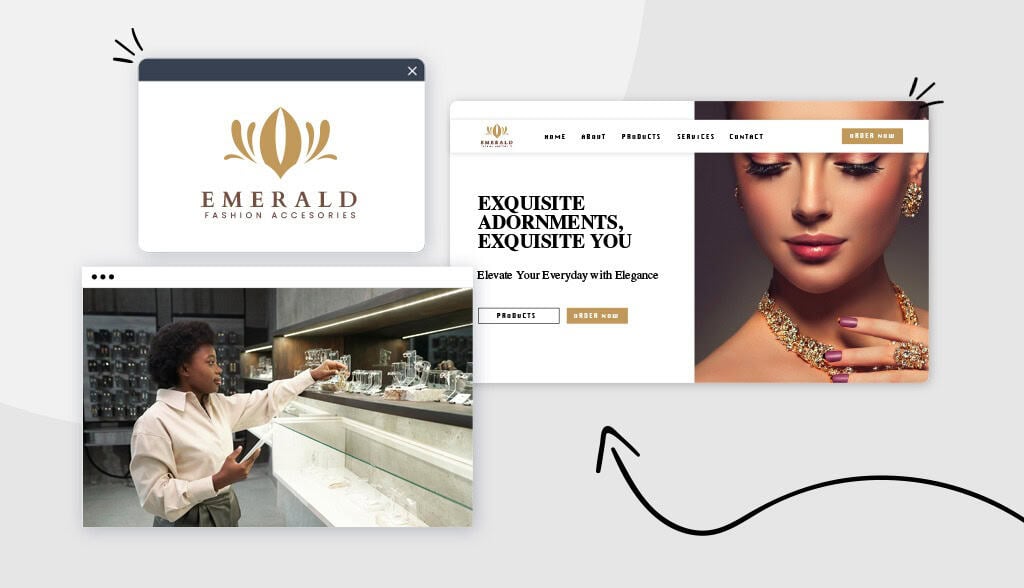
It’s no secret that business owners wear many hats, from marketing to bookkeeping.
No matter what type of business you plan to start, opening a new business is a journey with many small steps.
And when you’re selling jewelry, whether online or from your market stall, you need to add creative design and innovative ways to engage your target audience.
Thankfully, it doesn’t matter whether you’ve run a business before.
With a passion for jewelry and proven step-by-step instructions on the most up-to-date strategies, you can start a thriving jewelry business!
And just before we learn how to start a jewelry business, let’s consider why it could be the best business decision you’ll ever make.
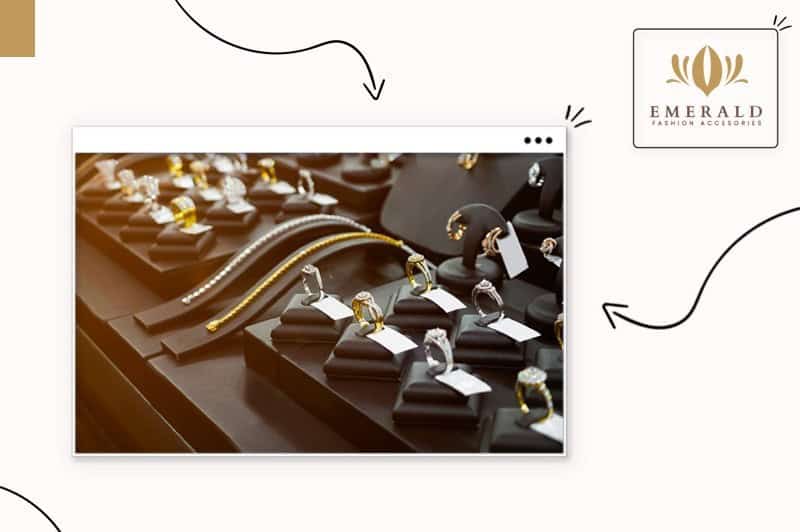
A niche is a small percentage of the total consumer market that wants a specific product or service.
To sell jewelry, you must identify your target audience and create marketing strategies that engage their imagination. And the better you define your niche, the more sales you’ll make, encouraging repeat customers and saving advertising costs.
For example, think about the clothing or beauty product stores you buy from; you go back for more, right?
That’s because you’re their target audience; you fit the persona those shops make their products for and the brand they built to engage your imagination.
So, what’s your niche?
A jewelry designer’s style influences their niche. For vendors, it’s the type of jewelry they sell and the market sector they sell to.
The jewelry business has endless niche opportunities because of its vast
range. Most, however, fall under 3 categories:
Also known as fashion jewelry, you make it using semi-precious stones, simulated diamonds, beads, plastic, wood, brass, and many other metals.
With increasing global consumer interest in affordable and fashionable jewelry and growth expectations of $59.7 billion by 2027, the costume jewelry market’s a low-entry business opportunity with huge profit potential.
Handmade jewelry is as bespoke as the person making it. Demand has soared in recent years, and with e-commerce sales platforms like Amazon Handmade, Etsy, Aftcra, Artfire, Folksy, and ShopHandmade, it’s now easy for creative artists to reach a global audience.
This is made of solid gold, platinum, sterling silver, and other precious metals and gemstones, like genuine diamonds, rubies, sapphires, etc. Think high quality, with a price tag to match.
Products range from $100 to $10,000 and more, depending on materials, their size, and the brand selling them. It’s a booming market, but with the high price tag comes expensive set-up costs.
You can also find your niche by reviewing the latest jewelry trends and following fashion blogs, industry publications, and influencers.
A micro-niche would have you focus on a particular audience or jewelry for a specific occasion, such as proms, graduation, engagement proposal, weddings, Mother’s and Father’s Day, Valentine’s Day, Christmas, and New Year’s.
After all, we can celebrate and remember almost every significant occasion with jewelry!
A small niche is an excellent way to enter the jewelry business. Find yours, then focus your branding, marketing strategies, and resources around it to make it band-specific for that target audience.
Once you’ve chosen your niche, it’s time to check out your competitors:
Your direct competitors are a fountain of helpful information you can use to establish your new jewelry business as a go-to brand for your target audience. You get that info by conducting a competitor analysis.
Your competitor analysis aims to identify your direct competitors (those selling similar jewelry pieces to the same audience), their best-selling products, which marketing platforms they use, and their strengths and weaknesses to gain a competitive advantage.
Ask the following questions when analyzing your competitors:
Read your competitors’ reviews on 3rd-party sales platforms, like Etsy, Amazon, and Artcra, to find any recurring complaints and unedited customer reviews about their products or service.
Look for something you can improve, such as product quality, customer service, delivery times, or a missed marketing opportunity, then use it to your advantage.
We’ll look at how you find and use your competitors’ information in just a minute, but before we do, you need a plan to succeed!
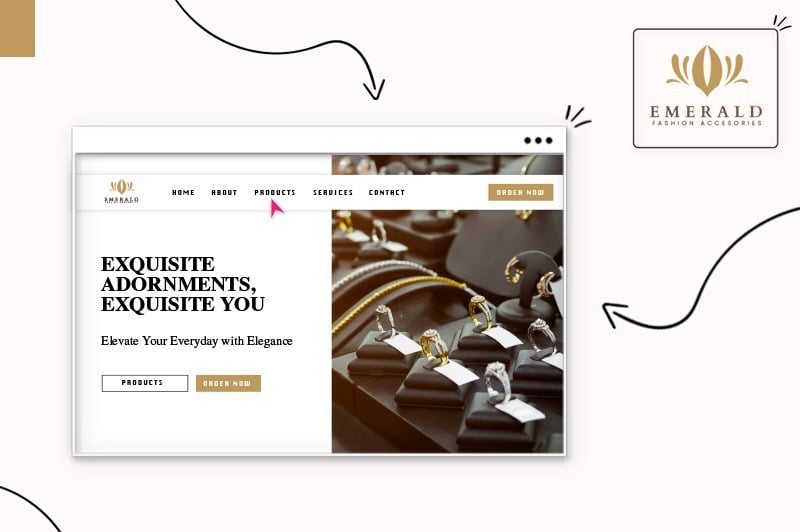
A business plan outlines your goals and describes how you’ll achieve them. It acts as your guide, helping you stay on target, and you can use it to convince others, like banks and manufacturers, to support your business.
The type of plan you need and its level of detail depends on your business size and whether you’ll start with employees or need a loan.
For example, if you need funding or are opening a brick-and-mortar store with employees, you might need a 60-page traditional plan. In contrast, a one-page business plan would suit most small jewelry startups selling online or at local events.
Either way, your jewelry business plan should contain the following information:
We provide a free business plan template so you can begin writing yours today, and the Small Business Administration (SBA) website has tons of helpful advice and examples.
Did you know that according to the US Bank, 82% of small businesses fail because of a lack of cash flow?
You can avoid that by building a realistic budget outlining your jewelry business’s current finances and long-term financial goals. The good news is, you can use the information you have in your business plan’s financial statement and projections to help you do it.
3 reasons you need a budget:
1. To make the proper financial decisions. Your business budget acts like a personal financial advisor, helping you evaluate your current finances and which actions you must take to reach your future goals.
2. Identifying where to cut or increase spending. Your budget can help identify areas, such as product lines and marketing strategies, that provide the right results. This enables you to either increase or decrease your spending, maximizing your return on investment (ROI).
3. To get funding to start and grow your jewelry business. In order to get a loan from a bank or other investors to start or expand your jewelry business, you’ll need a detailed budget that includes your current financial position and future projections.
You build a rock-solid budget by calculating 3 forms of business expenditures: Fixed, variable, and one-time costs.
Anything you buy to start or maintain your business, such as a laptop or a jeweler’s bench, are one-off expenses. Including them in your budget helps you figure out your set-up costs and what cash reserves you’ll need in case they need replacing.
Fixed costs, like rent, some utilities, licenses, permits, website hosting, subscriptions, and payroll, stay the same regardless of your sales volume. Once you have your fixed costs, add them together to find your fixed monthly expenditure.
Variable costs can go up or down with your sales volume, and you can tweak them to suit your budget. They can include stock, shipping costs, paid advertising, travel expenses, and usage-calculated utilities like gas or electricity.
When business is booming, and profits are high, you can invest more in any variables providing a good ROI. But when business is slow and income is low, scale back to ensure your business stays within its budget.
Add your variables monthly, and you’ll soon see how and where your expenses fluctuate, giving you an accurate financial projection you can build your budget around.
You can use cost projections to build your budget before you start your jewelry business.
Begin by checking out relevant sales platform subscription fees and website hosting packages. Calculate average workshop rental and utility costs. Contact suppliers for the product, raw material prices, and other expenses.
Then look at the average sales price for products similar to yours. From there, you’ll be able to project your future outgoings, income, and profit.
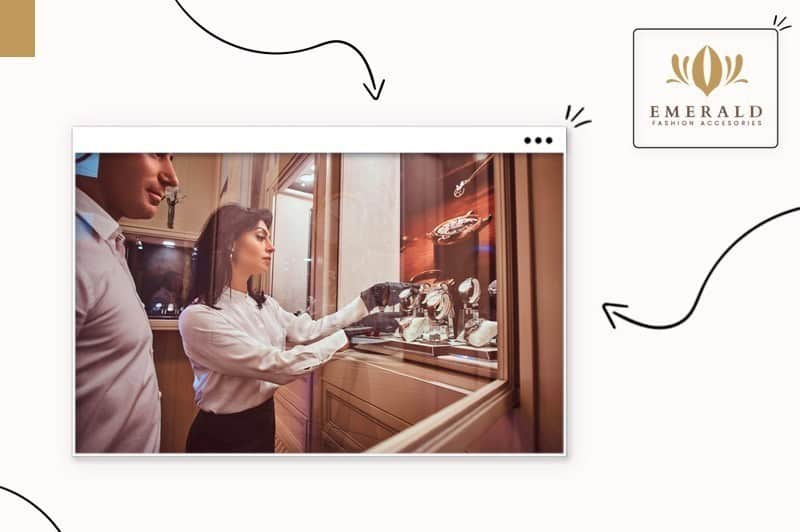
Many people start off manufacturing jewelry at home, but as their jewelry business grows, they develop the need for a more organized workspace or jewelry studio. This space can serve both as your sanctuary and creative outlet, as well as be a crucial building block in the success of your business.
You have 2 property choices for making jewelry products–in-house, or leasing a commercial space–and both will need a specific workshop/studio space for you (and your team, depending on your production size).
Consider the following when choosing your workspace:
Depending on your location, you may need specific licenses or permits to make your jewelry products. Some to consider are a zoning permit that provides permission to make your products in your chosen workspace, a business license that allows you to operate in your state, and a retail sales tax or vendor’s permit for collecting and paying sales tax.
The chemicals and tools you’ll use to make your jewelry often require proper safety precautions and ventilation. Check your local laws governing the use of these substances, and contact the Occupational Safety and Health Administration (OSHA) to find out more.
Set your workshop up so it supports your production. If your jewelry assembly has several steps, ensure a logical flow that enables you to maximize your workspace and hours.
Jewelers need many tools, some of which are pretty small; multiple storage compartments help you stay organized and find what you need when you need it.
In addition to your jewelry-making tools and must-have pliers and cutters, you’ll need to invest in furniture to make a fully-functional jewelry studio. The critical pieces of equipment you’ll need are a jeweler’s bench and a flex shaft, which I’ll talk about in a minute.
A jeweler’s workbench is higher than regular ones, helping prevent hunching and back problems. Jeweler’s workbenches include:
Jewelry business owners that require a production team or specific equipment for silversmithing/metalwork might need a commercial space. Similar license and permit rules and regulations might apply in most states, so contact your town hall or secretary of state’s office to confirm which ones you need.
Before you can start production, you have to source materials. To find them at the best price, ask other jewelry designers in person or via online forums who they buy from. You can research jewelry trade shows where you’ll find thousands of global jewelry vendors.
Also, consider getting a reseller license to forgo paying sales taxes when buying in bulk.
You can make 3 jewelry categories in-house with the right equipment, expertise, and training:
An alternative option to making jewelry yourself is to outsource production.
Suppose you plan to sell on many reselling platforms, like Amazon Handmade, Etsy, Aftcra, Artfire, or Folksy. In that case, you might need to outsource to meet demand!
Outsourcing is most popular with fashion/costume jewelry, especially if you’re buying from overseas.
However, it is possible to outsource fine, custom, and handmade jewelry, but it’s advisable to keep it local; I’ll explain why next:
For brick-and-mortar and stall jewelry business owners, local manufacturing gives your products that “made locally” appeal. And, you can build close relationships with your suppliers, maintain production standards, and avoid shipping costs, import tax, and other fees.
The downside to local manufacturing is that you’ll pay more due to labor and raw materials costs, have fewer manufacturers to choose from, and encounter limited production volumes.
Outsourcing production overseas from websites like Alibaba gives you a vast choice of manufacturers, lower labor and raw material costs, a more extensive choice of materials, and scalable production volumes.
However, communication can be difficult, and you must employ a 3rd-party inspection company to maintain quality control. And there are additional costs, such as MOQ (minimum order quantities, which can be high), shipping fees, and import taxes.
A marketing plan identifies a target market that wants your jewelry style and outlines how you’ll find and sell to them. The easiest way to develop a marketing plan that works for your target audience is to look at how your direct competitors do it.
Here’s how to analyze your competitors:
1. Identify your direct competitors. You can find your online competitors using keywords that are relevant to the products you’re selling, such as ‘silver anxiety rings,’ ‘crystal necklaces,’ or ‘mother-of-pearl pendants.’
2. Analyze their website and marketing strategies. Once you identify your competitors, check their websites, read their about page, and follow any social media links to get an idea of their overall marketing strategy.
3. Check out their content. Next, review their content on their websites and social media platforms. Look for how they connect with their target audience; for example, do they use beautiful product images and videos, a blog, and post regular content?
4. Review their products. Make a list of the products they’re selling. Are they the same as yours, or could you add them to your lineup?
5. Look at pricing. Is it higher, lower, or similar to what you want to charge? Take note, but don’t undercut or compete on price; your goal is to find the average.
6. Learn about their social media presence. Your competitors’ social media channels and any specific posts that get high engagement can provide crucial marketing information, such as your target market’s interests, what content or products they like, and which platforms they use.
7. Are your competitors using influencers in their campaigns? An influencer is someone with a large social following who you pay to promote your products. It’s an effective strategy for getting your products seen by a wider audience who trusts the influencer.
Both of these channels are excellent for selling jewelry, but only if you know how to create the right brand style and marketing strategy.
Etsy lets you build an online store; Instagram’s similar but with a social media approach. Your goal with both is to create a consistent, visually-striking brand that connects with your ideal client’s personality.
Check out your direct competitor’s branding strategies to source the most effective visuals and colors for engaging your target audiences.
For local jewelry businesses, visit your local malls and craft fairs. Find similar jewelers, look for the busy ones, and think about what attracts you and others to their stall and products. Check out their prices and what products are selling best.
Think about your unique selling point (USP) and how you’re different from your competitors. Then review your price points (what you want to charge per product) and if it compares.
Look at all your competitors’ marketing ideas, then create a list of favorites you can use in your jewelry marketing plan.
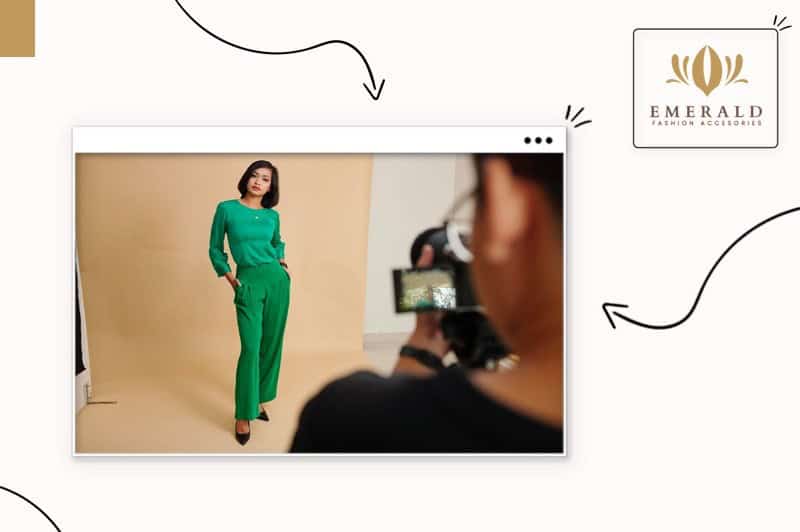
It’s no exaggeration to say product photography can make or break your jewelry business, because even your most beautiful pieces can look unappealing if the images are of poor quality.
Jewelry is a visual and tangible product, and as your prospective customers can’t touch your pieces, your product photography must sell for you.
Professional product photography also increases user engagement with your website, attracts your audience on Instagram, and builds consumer trust in your brand on sales platforms like Etsy and Amazon.
You have 2 choices for creating high-quality product photography: Invest in equipment and do it yourself, or hire a professional photographer. I’ll explain how to do both next.
The good news is, you don’t need an expensive product photography camera to take professional-looking images. An iPhone can produce excellent product photos with a few exceptions.
For example, shooting close-ups of intricate details and reflective surfaces can be tricky; here, you might need a smartphone macro lens. You’ll also require a tripod, lighting set-up, and a backdrop.
When shooting your product images, take several angles and views and use the following 2 categories:
1. Detail product photos: Close-up images taken on a plain, clean background, minimizing distractions and highlighting every detail of your piece. These product photos are clutter-free and consistent–perfect for your catalog images.
2. Lifestyle photos using models: These photos show the scale of your products when worn, and are great for combining pieces to encourage upselling (when people buy 2 or 3 products that complement one another). Lifestyle photos are what you’ll use on your website and social media posts.
Consistency is crucial for your product photography, as it creates familiarity with your viewers, increasing trust in your brand. For detailed product photos, use similar backdrops and styles like plain white, slate, marble, or a wood grain effect.
But if photography isn’t your thing, no worries; there’s a simple solution.
Professional photographers are skilled at complicated lighting, image angles, working with models, and getting the best out of your pieces.
Thankfully, hiring a professional photographer doesn’t have to break your budget; here are 3 solutions to finding an affordable professional photographer.
Instagram is image-driven, so no surprise that it’s also where you can find photographers. Search using # (your city) photographer; look for ones just getting started (they’ll be cheaper) with a style that suits yours.
High schools often have great photography clubs with budding photographers who want to build their portfolios. Don’t let the age fool you; these kids have top-quality equipment and understand lighting.
Most students need experience in several mediums; your products could be one of them. And if you connect with a photographer you like, it could start a long-lasting business relationship.
To take lifestyle product images, you’ll need models. But few of us have a list of models on speed dial; fortunately, you don’t need modeling connections to find them.
Once again, most models are active on social media, sharing images from previous work and making it easy to see their style and modeling level.
To find a local model, use a location tag, # (your city) model. And, look at the photographers you saw; do they have models in their photoshoots? If so, send them a message or contact them through the photographer.
Model and photographer Facebook groups are common in every location, where you can find models with various levels of experience that might be interested in a creative project.
Use the group to create a post describing the models you need and your project details; odds are, you’ll get a ton of replies.
Friends are perfect for modeling, as you’re familiar with each other and they might do it for free. It doesn’t matter if they have any experience, because your photographer knows how to make them comfortable.
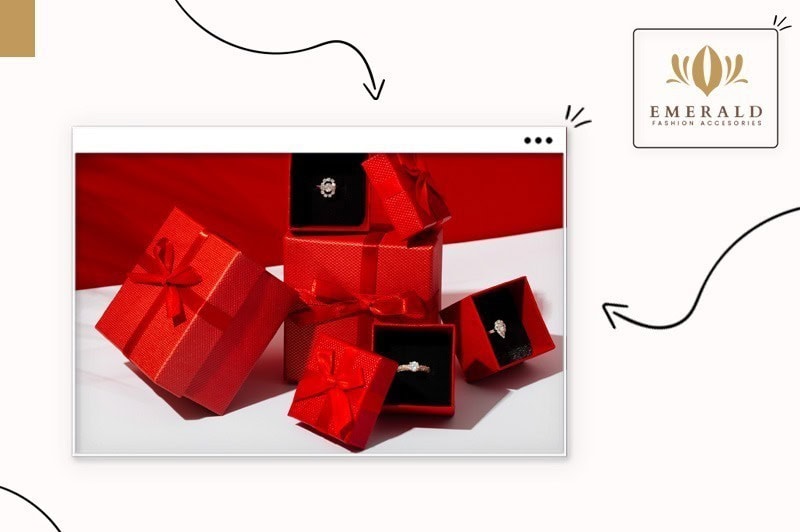
You have several choices to deliver your jewelry; which you choose depends on what platforms you’ll use to sell your products–such as Amazon, Etsy, Instagram, your website–and the quantity.
Let’s look at all of them:
When you sell on Amazon, you can use FBA (fulfilled by Amazon). You send your stock to a fulfillment center, and they’ll deliver. Their rates, delivery time, and customer service are excellent, and Amazon takes full responsibility for late deliveries.
You can use an online fulfillment center when selling via your website. These businesses provide the same service as Amazon; they store, pick, pack (not branded packaging, you’ll need to do that), and deliver your products for a fee.
When selling on platforms like Etsy, you must ship your products using a pickup service like the United States Postal Service, or UPS and DHL, who’ll come to your workshop/studio. Shop around for the best prices, as a few dollars less on postal can make a massive difference in your bottom line!
The best way to stand out from your competitors and create a loyal following of return customers is to trust yourself and your design instincts, remain authentic, and listen to your target audience.
Take each step one at a time and polish them until they shine. And don’t leave people waiting; start selling now because the world is waiting to wear your creations.
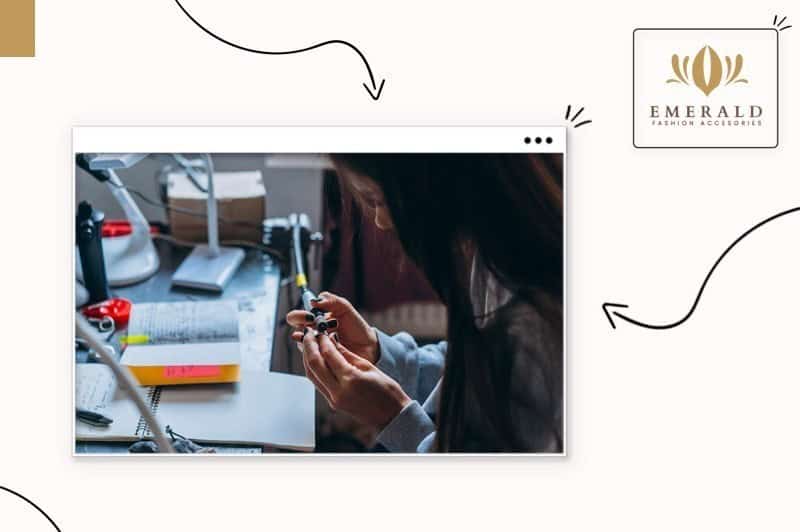
Start-up costs are relative to the size and type of jewelry business you want to create.
For instance, you can begin with essential supplies and work in-house to make your jewelry with a couple of hundred dollars. Or, you could invest thousands in training, raw materials, and equipment to start a fine jewelry business from a commercial studio.
Yep, the average gross margin for jewelry is around 42.6%. So, for every $1,000 of products sold, you could earn $420.60 profit.
While the average jewelry shop owner makes $41,872 annually, some jewelry stall owners earn $1000 per month as a side hustle. Entrepreneurial sellers who choose the right niche, identify their target audience, create beautiful branding and use several sales platforms can make that in a day!
This portion of our website is for informational or educational purposes only. Tailor Brands is not a law firm, and the information on this website does not constitute legal advice. All statements, opinions, recommendations, and conclusions are solely the expression of the author and provided on an as-is basis. Accordingly, Tailor Brands is not responsible for the information and/or its accuracy or completeness. It also does not indicate any affiliation between Tailor Brands and any other brands, services or logos on this page.
Products
Resources
©2025 Copyright Tailor Brands